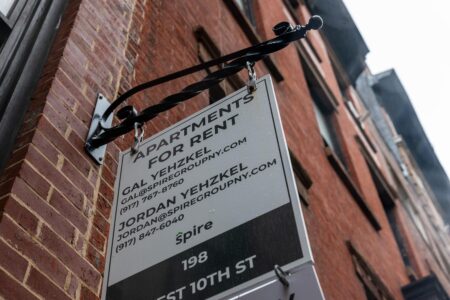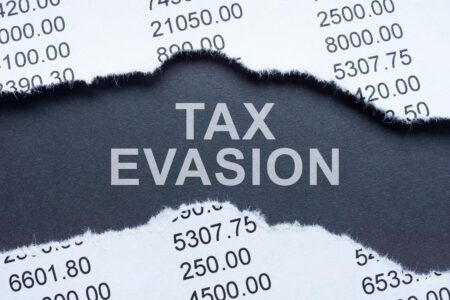The Biden administration is preparing to reopen access to two critical programs in December that would provide additional pathways to eventual student loan forgiveness.
Since August, millions of borrowers have been stuck in limbo as a result of a court battle over the SAVE plan. One of the Biden administration’s key initiatives to reduce the burden of student debt, SAVE is the newest income-driven repayment (or IDR) plan. The program lowers monthly payments, waives excess interest, and allows for student loan forgiveness after 10 to 25 years in repayment, depending on the type of loans and the original balance. The SAVE plan also is a qualifying repayment plan for Public Service Loan Forgiveness; PSLF provides for debt relief in as little as 10 years for borrowers who pursue nonprofit or government careers while meeting other program requirements.
As part of the SAVE plan implementation, the governing regulations phased out new enrollments in two older IDR plans: Pay-As-You-Earn (referred to as the PAYE plan), and Income-Contingent Repayment (known as ICR). This was designed to simplify the complex IDR system that had multiple repayment plan options. But with SAVE now blocked due to the ongoing litigation, and PAYE and ICR phased out, many borrowers now have far fewer options to pursue student loan forgiveness than they did just a few months ago.
To address this, the Education Department published an interim rule this week that, once implemented, will reopen enrollment in the PAYE and ICR plans, giving borrowers who want to resume progress toward PSLF or IDR loan forgiveness some additional options.
Student Loan Forgiveness And Lower Payments Remain Blocked For SAVE Plan
In August, the 8th Circuit Court of Appeals issued an injunction preventing the Education Department from implementing the provisions of the SAVE plan. This included any student loan forgiveness, interest subsidies, or reduced payments under the SAVE plan formula. As a result of the injunction, millions of borrowers were put into a forbearance.
While no payments are due and no interest accrues during the period, the forbearance doesn’t count toward student loan forgiveness under IDR or PSLF. In addition, the Education Department had to pause all IDR processing — including for other IDR plans — to ensure compliance with the 8th Circuit’s order. Millions of borrowers have become effectively stuck as a result. However, the Education Department has indicated that IDR processing will soon resume, possibly providing borrowers with the opportunity to switch to a different IDR plan and get back on track for student loan forgiveness.
PAYE And ICR Plans Qualify For Student Loan Forgiveness Under PSLF And (For Now) IDR
With the PAYE and ICR plans phased out, most borrowers stuck in the SAVE plan forbearance have only one option if they want to resume making progress toward loan forgiveness under PSLF or IDR: the Income-Based Repayment, or IBR, plan.
IBR was created by Congress in 2007 (and expanded in 2010), and therefore is not subject to the same type of legal challenges that have hobbled the SAVE plan and several other Biden administration debt relief initiatives. Like all IDR plans, IBR uses a formula applied to the borrower’s income and family size, with any remaining balance eligible for loan forgiveness after 20 or 25 years. IBR also is a qualifying plan for PSLF.
But IBR can be much more expensive than SAVE, and has minimal interest benefits. In addition, IBR has a “partial financial hardship” requirement that can limit new enrollments for borrowers if their income is too high. This means that borrowers who had previously been enrolled in other IDR plans, and then switched to SAVE, could now be cut off from continuing to pursue loan forgiveness if they now earn too much money to qualify for IBR.
The resurrection of PAYE and ICR is intended to address this. “For borrowers who would prefer to make payments” while SAVE remains blocked — “such as borrowers pursuing PSLF or low-income borrowers who would owe no monthly payments — enrolling in PAYE or ICR may be an option to consider,” says the department in updated guidance.
What Borrowers Pursuing Student Loan Forgiveness Need To Know About ICR And PAYE Plans Reopening
On Friday, the Education Department published an interim rule to reopen access to the PAYE and ICR plans.
“The scope of this rule is narrow,” says a department summary accompanying the interim rule publication in the Federal Register. “It just revises the end date for most borrowers to enroll in ICR or Pay as You Earn plans from July 1, 2024, to July 1, 2027. This time-limited change to eligibility restrictions that went into effect on July 1, 2024, will allow the Department to meet its statutory obligations while it undertakes the necessary administrative changes to make its repayment plans that would otherwise be available for borrowers compliant with the terms of an injunction from the U.S. Court of Appeals for the Eighth Circuit (Eighth Circuit).”
The rule is expected to go into effect in 30 days, which means borrowers could be able to apply for PAYE and ICR by mid-December.
Uncertainties Remain For Student Loan Forgiveness Under PAYE And ICR Plans
While the reopening of the PAYE and ICR plans is good news for borrowers pursuing student loan forgiveness, there is nevertheless uncertainty on the horizon.
The 8th Circuit is considering whether student loan forgiveness is allowable under PAYE and ICR at the end of their 20- or 25-year terms. Even though the current legal challenge is technically just about the SAVE plan, the PAYE and ICR plans were established using the same legal authority under the Higher Education Act, which is now under scrutiny. The Biden administration argues that the legislative history of the Act, as well as 30 years of regulations, loan contracts, and bipartisan Education Department guidance, are unambiguous: borrowers should be entitled to loan forgiveness under these plans after fulfilling their IDR repayment obligations. But the Republican-led challengers contend that the 1993 provision of the Higher Education Act is ambiguous as to whether loan forgiveness was authorized by Congress for these programs.
Thus, the future of the PAYE and ICR plans may depend on the scope of the 8th Circuit’s ruling, which is expected in the coming months. While it’s possible that PAYE and ICR could be struck down entirely, another possibility is the plans remain intact, but loan forgiveness at the end of 20- or 25-years is struck down for these plans. Under those circumstances, payments made under PAYE and ICR should still count toward loan forgiveness for PSLF, as well as under IBR. But the future of these plans may hinge on the 8th Circuit.
In addition, there is a possibility that the incoming Trump administration could take steps to reverse the Biden administration’s interim rule reopening access to PAYE and ICR. This could leave borrowers on track for student loan forgiveness under IDR or PSLF with only a narrow window of time to try to enroll toward the end of this year or in very early 2025.
Read the full article here











